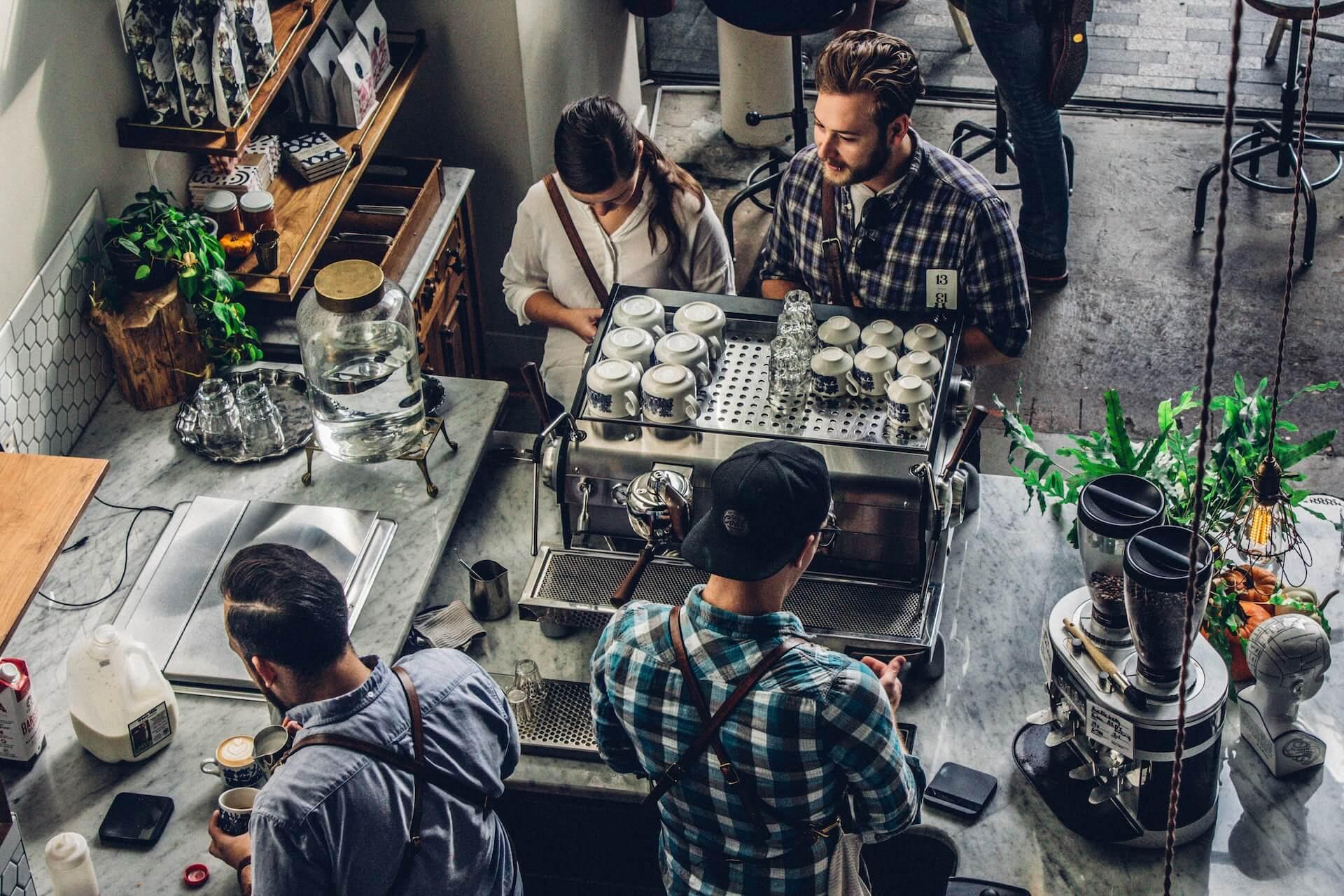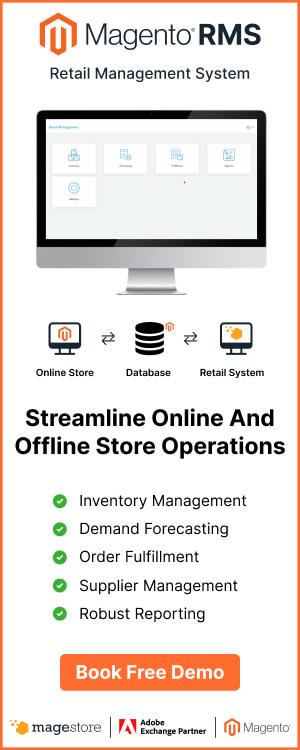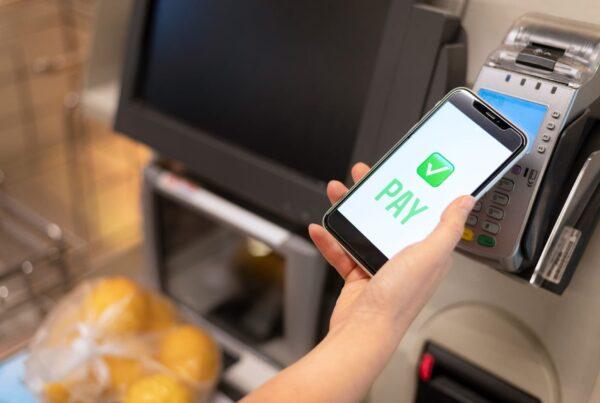A point of sale (POS) system contains 2 main parts: hardware and software. Today, POS systems can handle much more complex tasks than merely performing a transaction. From scanning products to tracking inventory and labor costs, POS systems are essential to managing any retail business operations, including restaurants. As the technology evolves, POS hardware also becomes more mobile, lightweight, and less expensive. If you’re considering purchasing a restaurant POS, it’s important to understand what restaurant POS hardware you need and the criteria to choose the best-fit POS hardware.
What is restaurant POS hardware?

Restaurant POS hardware is any device serving as the input and output for the POS system to function. For the restaurant industry, POS hardware can be simple like an iPad or smartphone, or it can be complex like a complete setup with barcode scanners, cash drawers, and a kitchen display system (KDS).
It’s crucial to note that the hardware you need is dependent on the POS software you’re using. It means you cannot buy a random card reader and expect it to work with your POS system. Before purchasing any hardware, make sure you check its compatibility with your POS restaurant software.
The difference between POS hardware and POS software

POS hardware is the physical component of the POS system. These are the parts you can see and touch, such as an iPad used as a payment terminal. All POS hardware will send and receive data from the central POS system, creating a solid connection for data to generate accurate POS reports.
In contrast, POS software is the intangible part. It is a set of instructions that runs the system. You need appropriate hardware to operate the software.
What are the must-have components of POS hardware for restaurants?

Restaurants often have special requirements for hardware to accommodate their complicated workflows. Apart from common hardware for retail like payment terminals and receipt printers, restaurants need extra pieces such as self-ordering kiosks, kitchen display systems (KDS), and handheld POS systems.
Let’s explore the popular equipment needed for a restaurant:
Touch-screen monitor
Touch-screen monitor is the backbone of the POS system. The touch-screen monitor serves as the POS front-end by ringing up orders, clocking in, setting appointments, and more.
A monitor to run your front of house can be a tablet or a screen that connects to a customer-facing display and peripherals. You have 2 choices for POS tablets: iPad and Android, depending on which one your POS system is compatible with.
Price range: ranging from $350–$2,000 per monitor.
Credit card reader
A credit card reader collects credit, debit, and contactless payments securely. It is a necessary POS hardware component since more customers are opting for cashless payment options.
Credit card readers vary in style. It can be a small card-swipe device plugged into your tablet or a full terminal with a receipt printer and touchpad. If you only need a basic option, make sure your terminal has at least a chip reader that is EMV-compliant. This is more secure for your POS system.
Price range: $10–$500 per card reader.
Customer-facing display
A customer-facing display is a screen that faces your customers to let them view their orders, confirm their transactions, and sign their names. This is especially beneficial for restaurants. This screen prevents mistakes in order processing by allowing customers to check their orders before you send them to the kitchen. When the guest-facing display isn’t in use, you can program it to show daily specials, sale items, or your brand advertisement.
Price range: around $200–$400 per display.
Cash drawer
Despite the growing popularity of digital payments, restaurants still keep cash drawers. A cash drawer is a device with a secure locking mechanism to store your cash for transactions. Today modern cash drawers can be integrated with your POS terminals via USB or Bluetooth. When choosing a cash drawer, you can consider the size and the number of slots and coin trays you need.
Price range: roughly $100 per drawer.
Barcode scanner
Although barcode is often used by retail businesses, restaurants can utilize barcode as well – especially those selling prepackaged foods or merchandise.
A barcode scanner gets product information by scanning its barcode and adding it to the customer’s cart. It can be connected to POS terminals, therefore you can check the scan from a register table or an order screen. In addition, barcode scanners can help you manage inventory with automatic stock counts when a sale is made, and sync the data to your POS system.
Price range: from $50–$800 per scanner.
Receipt printer
A receipt printer uses thermal printing to generate receipts when customers make a purchase. If you have multiple monitors and registers, you can choose whether you want multiple receipt printers or connect all to 1 printer only.
Price range: $150–$600 per printer.
Kitchen printer
Though many restaurants now use digitized kitchen tickets, many still include a kitchen printer in their hardware bundle. It creates receipts using impact printing technology that makes smudging difficult. Unlike receipt printers, a kitchen printer is designed to work specifically in hot or humid environments. Thanks to its ability to endure heat, humidity, and sticky hands, the kitchen printer is a perfect choice for busy food preparation areas.
Price range: $200–$500 per printer.
Self-service kiosk
Self-service kiosks, or self-checkout kiosks, allow patrons to customize their orders and pay themselves without a cashier. According to NICE, 81% of customers expect more self-service options. In addition, GRUBBRR CEO Sam Zeitz revealed that customers’ average order value increases by 12% to 20% when they use a self-service kiosk.
While a kiosk point of sale is a large upfront investment, it can make more money for your business over time with higher overage orders or ticket amounts. Furthermore, it can reduce labor costs and free your staff to focus on order fulfillment.
Price range: $150–$7,000 per kiosk POS.
Kitchen display system (KDS)
A kitchen display system (KDS) receives orders from waitstaff and sends them to kitchen staff through the POS system. It helps monitor the time a dish is prepared so that you can identify any bottlenecks. This is a crucial restaurant POS hardware that aims to replace traditional verbal orders or handwritten ticket orders, thus removing communication errors.
KDS can be a touch screen for small restaurants, while it can include a printer and a bump bar for larger businesses. A good KDS should display texts that are easily read from a distance while enduring a hot and greasy environment.
Some KDS have more features than merely listing orders. They can arrange order priority and separate orders by course. Besides, they can connect with online ordering and sync all orders in the queue.
Price range: $100–$1,500 per KDS.
Digital menu board
Many restaurants now use a digital menu board to show customers their menus, specials, or current promotions. You can create your digital menu in a POS software system, and only need a screen and a router to display it. Some options can be a flat-screen TV, a POS tablet for restaurants, a dedicated signage board, and other handheld options.
Price range: $130–$1,000 per board.
Handheld ordering device
A handheld ordering device, or a mobile POS (mPOS) device, lets you take orders and process payments from different locations while still connected to a central POS system. These devices also connect with the KDSes to ensure correct orders and the payment charged. A good mPOS should be able to work offline and process payment. When the Internet is restored, it will sync the data to the central POS.
Price range: $150–$600 per mPOS.
3 factors to choosing POS system hardware suitable for your restaurant

1. Compatibility
The foremost thing to remember is compatibility. POS hardware must be able to work in conjunction with POS software to perform multiple restaurant operations.
When shopping for POS restaurant hardware, check in advance if this device can integrate with your POS system. If you haven’t got a POS system, check this article to choose the best-fit POS for your restaurant.
The best way to prevent buying incompatible hardware is simply to purchase POS hardware from the same POS system provider rather than a third party.
2. Price
Price is a big factor to consider. It can vary based on your business needs and requirements. For instance, a small food truck can go for a single POS terminal and basic peripheral hardware within a budget of $1000 for the bundle. On the other hand, a full-service restaurant that requires several POS terminals, a kitchen display system, a self-checkout POS, and a guest-facing display will cost much more. Therefore, you should determine which hardware is suitable for your business needs and the investment you’re willing to take.
In addition, the price of hardware also depends on your decision to lease or purchase the devices. For leasing, you only pay small monthly fees, versus a big upfront buying cost. However, keep in mind that some leases bind you to a long-term commitment with a high fee for early contract termination. In addition, leases can include high-interest rates (up to 13-20% based on the terms). This means leasing can cost you more in the future than purchasing the hardware outright at the beginning.
Recognizing this challenge, some POS providers offer flexible payment options by including the cost of POS hardware in its monthly software fees, so you can spread the cost out over time. If you want to know more about how much a POS system costs, check out this article.
3. Usability
Finally, you should pay attention to hardware usability. A good POS system device should be easy to use and adopted by new staff. When you shop for a device, do a real test to see if you can control it easily. For example, iPads are familiar to many people with their intuitive design, making them super easy to pick up and use with few instructions.
Furthermore, you should consider the durability of the hardware, especially those used frequently in kitchen environments like impact printers or KDSes. Make sure your restaurant POS hardware can withstand high temperatures, humidity, and accidental drops.
FAQs
What POS hardware do I have to have?
Depending on your needs and business size, the bundle of POS hardware can be different. Still, here are the most important pieces that any restaurant should have:
- Touch-screen monitor
- Card reader
- Receipt printer
- Kitchen printer
- Customer-facing display
- Cash drawer
Do I have to buy POS hardware from the same POS software vendor?
Not necessary. You can purchase POS software from one vendor and hardware from another. All you need to do is check if the hardware is compatible with the software.
Can I use my existing POS hardware with Magestore POS software?
Magestore POS can work with a wide range of hardware from different brands. Check if your existing hardware is on this list of compatible hardware. If not, you should purchase the proper equipment.















A (POS) system is a critical component of restaurant operations, helping with order processing, payments, inventory management, and more. The hardware components you choose for your restaurant’s POS setup can significantly impact efficiency and customer experience.